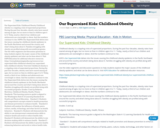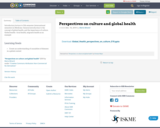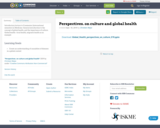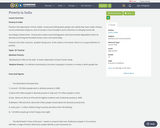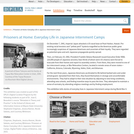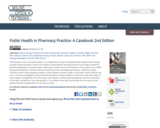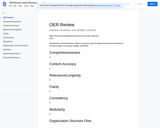Poverty in IndiaPoverty is the deprivation of food, shelter, money and clothing when people can’t satisfy their basic needs. Poverty can be understood simply as a lack of money or more broadly in terms of barriers to everyday human life.According to David Kurten , Poverty also involve social disintegration and environmental degradation which he describe as forming the threefold human crisis in the world today.Poverty is the other economic problem facing most of the nations in the world. There is no unique definition of poverty.Types Of PovertyAbsolute Poverty : (Destitution) It refers to the state of severe deprivation of basic human needs. Relative Poverty : It is defined contextually as Economic inequality in location or society in which people live. Facts And Figures · The World Bank estimated that, 1) Around 1.29 billion people were in absolute poverty in 2008. 2) About 400 million people in absolute poverty in India and 173 million people in china.3) Sub- Sahara an Africa at 47% had the highest incidence rate of absolute poverty in 2008.4) Between 1990 and 2010, about 663 million people moved above the absolute poverty level.5) Every year 11 million children living in poverty die before their 5th birthday.6) 1.02 billion people go to bed hungry every night. · The World bank’s “Voice of the poor” , based on research with over 20,000 poor people in 23 countries, identifies a range of factors which poor people identify as part of poverty are :· Precious livelihoods · Excluded location· Gender relationship· Lack of security· Problems in social relationship· Weak community organization· Limited capabilities Poverty line· The poverty threshold or poverty line is the minimum level of income deemed adequate in a given country.· In practice, like the definition of poverty, the official or common understanding of the poverty line is significantly higher in developed countries than in developing countries.· The common international poverty line has in the past been roughly $1 a day. In 2008, the World Bank came out with a revised figure of $1.25 at 2005 purchasing-power parity (PPP).· Determining the poverty line is usually done by finding the total cost of all the essential resources that an average human adult consumes in one year.· The largest of these expenses is typically the rent required to live in an apartment, so historically, economists have paid particular attention to the real estate market and housing prices as a strong poverty line affecters. Characteristics of Poverty Effects of poverty also be causes and creating a “Poverty cycle” operating across multiple levels, individual, national, global. 1)Health : one third of deaths are due to poverty related causes.According to the World Health Organization, hunger and malnutrition are the single gravest threats to the world's public health and malnutrition is by far the biggest contributor to child mortality , present in half of all cases.Almost 90% of maternal deaths during childbirth occur in Asia and sub-Saharan Africa, compared to less than 1% in the developed world.· Hunger : Rises in the living cost making poor people less able to afford items. Poor people spend most of the portion of their budget on to food than richer person.· Education : Poor children are suffering from hunger, irritability,headache,viral infection, colds. It is safe to state that children who live at or below the poverty level will have far less success educationally than children who live above the poverty line.· Poor children have a great deal less healthcare and this ultimately results in many absences from the academic year.· Additionally, poor children are much more likely to suffer from hunger, fatigue, irritability, headaches, ear infections, flu, and colds. These illnesses could potentially restrict a child or student's focus and concentration.Housing : Poverty increases the risk of homelessness. Slum-dwellers, who make up a third of the world's urban population, live in a poverty no better, if not worse, than rural people, who are the traditional focus of the poverty in the developing world , according to a report by the United Nations. There are over 100 million street children worldwide.5) Violence: According to the reports, many women become victims of trafficking. The most common form of which is Prostitution as a mean of survival and economic desperation. Deterioration of living conditions can often compel children to abandon school in order to contribute family income.E.g. Slavery and human trafficking. Significance· The most common method of measuring and reporting poverty is the headcount ratio, given as the percentage of population that is below the poverty line.· One of the undesirable features of the headcount ratio is that it ignores the depth of poverty; if the poor becomes poorer, the headcount index does not change.· Poverty gap index provides a clearer perspective on the depth of poverty.Poverty Reduction· Increasing supply of basic needs.· Increasing supply of food and other goods.· Increasing supply of healthcare and education,water and energy utilities.· Removing constraints on govt. services· Reversing brain drains.· Controlling overpopulation.Poverty in IndiaPoverty in IndiaPoverty is the deprivation of food, shelter, money and clothing when people can’t satisfy their basic needs. Poverty can be understood simply as a lack of money or more broadly in terms of barriers to everyday human life.According to David Kurten , Poverty also involve social disintegration and environmental degradation which he describe as forming the threefold human crisis in the world today.Poverty is the other economic problem facing most of the nations in the world. There is no unique definition of poverty.Types Of PovertyAbsolute Poverty : (Destitution) It refers to the state of severe deprivation of basic human needs. Relative Poverty : It is defined contextually as Economic inequality in location or society in which people live. Facts And Figures · The World Bank estimated that, 1) Around 1.29 billion people were in absolute poverty in 2008. 2) About 400 million people in absolute poverty in India and 173 million people in china.3) Sub- Sahara an Africa at 47% had the highest incidence rate of absolute poverty in 2008.4) Between 1990 and 2010, about 663 million people moved above the absolute poverty level.5) Every year 11 million children living in poverty die before their 5th birthday.6) 1.02 billion people go to bed hungry every night. · The World bank’s “Voice of the poor” , based on research with over 20,000 poor people in 23 countries, identifies a range of factors which poor people identify as part of poverty are :· Precious livelihoods · Excluded location· Gender relationship· Lack of security· Problems in social relationship· Weak community organization· Limited capabilities Poverty line· The poverty threshold or poverty line is the minimum level of income deemed adequate in a given country.· In practice, like the definition of poverty, the official or common understanding of the poverty line is significantly higher in developed countries than in developing countries.· The common international poverty line has in the past been roughly $1 a day. In 2008, the World Bank came out with a revised figure of $1.25 at 2005 purchasing-power parity (PPP).· Determining the poverty line is usually done by finding the total cost of all the essential resources that an average human adult consumes in one year.· The largest of these expenses is typically the rent required to live in an apartment, so historically, economists have paid particular attention to the real estate market and housing prices as a strong poverty line affecters. Characteristics of Poverty Effects of poverty also be causes and creating a “Poverty cycle” operating across multiple levels, individual, national, global. 1)Health : one third of deaths are due to poverty related causes.According to the World Health Organization, hunger and malnutrition are the single gravest threats to the world's public health and malnutrition is by far the biggest contributor to child mortality , present in half of all cases.Almost 90% of maternal deaths during childbirth occur in Asia and sub-Saharan Africa, compared to less than 1% in the developed world.· Hunger : Rises in the living cost making poor people less able to afford items. Poor people spend most of the portion of their budget on to food than richer person.· Education : Poor children are suffering from hunger, irritability,headache,viral infection, colds. It is safe to state that children who live at or below the poverty level will have far less success educationally than children who live above the poverty line.· Poor children have a great deal less healthcare and this ultimately results in many absences from the academic year.· Additionally, poor children are much more likely to suffer from hunger, fatigue, irritability, headaches, ear infections, flu, and colds. These illnesses could potentially restrict a child or student's focus and concentration.Housing : Poverty increases the risk of homelessness. Slum-dwellers, who make up a third of the world's urban population, live in a poverty no better, if not worse, than rural people, who are the traditional focus of the poverty in the developing world , according to a report by the United Nations. There are over 100 million street children worldwide.5) Violence: According to the reports, many women become victims of trafficking. The most common form of which is Prostitution as a mean of survival and economic desperation. Deterioration of living conditions can often compel children to abandon school in order to contribute family income.E.g. Slavery and human trafficking. Significance· The most common method of measuring and reporting poverty is the headcount ratio, given as the percentage of population that is below the poverty line.· One of the undesirable features of the headcount ratio is that it ignores the depth of poverty; if the poor becomes poorer, the headcount index does not change.· Poverty gap index provides a clearer perspective on the depth of poverty.Poverty Reduction· Increasing supply of basic needs.· Increasing supply of food and other goods.· Increasing supply of healthcare and education,water and energy utilities.· Removing constraints on govt. services· Reversing brain drains.· Controlling overpopulation.






